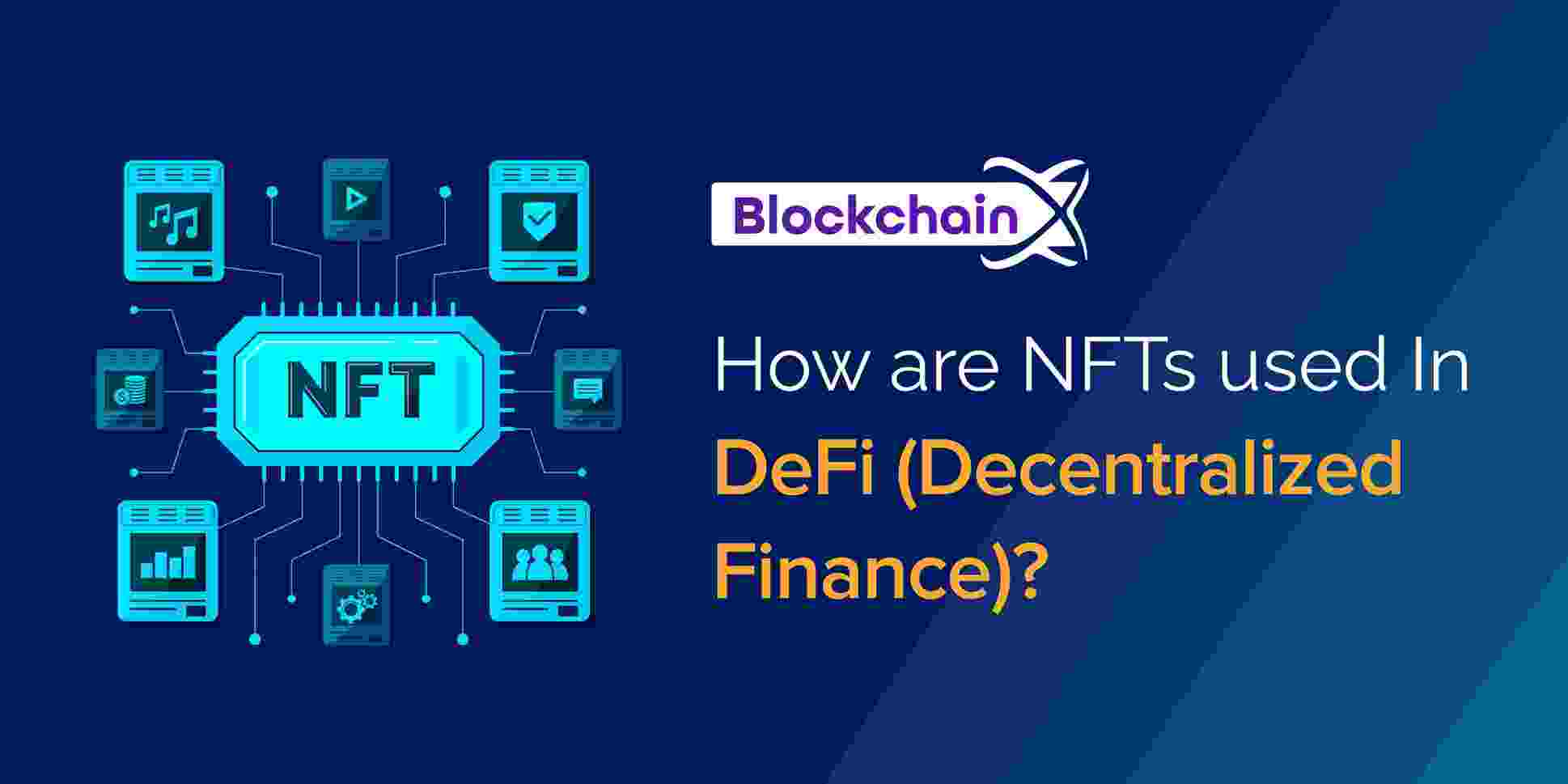The two most important things in the existing crypto market are DeFi and NFT. Decentralized finance and non-fungible tokens are presently the two most prominent applications in blockchain technology. DeFi provides decentralized access to financial services, while non-fungible tokens focus on permitting the tokenization of assets. However, it is significant to evaluate the possibilities of leveraging the NFT and DeFi combination for the benefit of enterprises.
NFTs are always assumed as just digital art or collectibles that are earning huge prices at auction because of the hype. However, non-fungible tokens can make an incredible contribution to the development of decentralized finance in the long term.
In this blog, we help you to find the DeFi and NFTs and their reasonable ways for accomplishing the best value from NFT use in DeFi.
What are NFTs and DeFi?
NFTs are non-fungible tokens. They are essentially buying a digital form of some rare asset like art or literature, which is almost the only version, the only copy of which we own. NFTs represent unique assets and are scarce and cryptographically safe. They are not convertible with each other and thus introduce a scarcity in the digital world. Each of these tokens gains value because of this scarcity. This happens according to the traditional law of supply and demand - the parties are willing to hire more for a certain and rare NFT.
DeFi or decentralized finance is a financial system built using blockchain technology. Several public blockchains are designing DeFi systems. The most famous is on the Ethereum blockchain. Through many in-built tools such as oracles, smart contracts, and cryptocurrencies, DeFi enables decentralized financial management. Everything from loans to invoicing can be performed on DeFi. DeFi works with all kinds of financial instruments, techniques, and solutions.
How does NFT help in DeFi?
Supply is limited
You cannot have a continual stream of NFTs with similar value propositions. Rather, they should limit everything from fan participation to sports highlights reels to virtual cats.
Verifiable deficiency
Whichever is chosen, it must be assessed. Knowing the rest of the NFTs and who they relate to at all times is important. It is feasible to do this using blockchain.
Unique
Unlike Bitcoin, NFTs are unique. Every token is unique. Deal with them like movie or concert tickets; They provide access to an event to a specific individual. Even if someone stole your concert ticket (along with your personal information), the new provider will need to ensure your identity to attend the event.
Utilization specific
You can't use NFTs to buy a cup of coffee, but you can buy it for just one reason, whether it's listening to music, attending a special party.
Using NFTs in Decentralized Finance
The combination of NFT decentralized finance becomes immediately possible, especially with the ability of NFTs to represent the commercialization of digital products and services. NFTs have become one of the promising applications in the DeFi field.
For example, Ethereum has introduced the ERC-20 token to represent digital assets. Therefore, NFTs can easily assist as proof of ownership rights to digital art. Ethereum has become one of the top choices for creators looking to share art and interact with an engaged community of collectors. With the flexibility to prove ownership, NFTs can provide exceptional price advantages in the DeFi space. Let us take a look at the different possible ways to use NFTs in DeFi.
Resolving the Problem of Collateralization
One of the most important aspects of the NFT and DeFi combination is the potential to unlock value. Also, it is hard to round up on certain mechanisms to assure the determination of the value of NFTs.
The use of NFT and DeFi can help to easily solve the problem of collateralization. It is also important to note the troubles caused by issues in the liquidity of the market. The artwork and collectibles section is quite subjective in terms of liquidity. For example, consider that a painting costs about $1 million. However, the price of the painting matters only if a person is interested in paying for it. The NFT decentralized finance association can easily solve the issue of collateralization for artwork. The most plausible solution, in this case, may be focused on using NFT art and collectibles as collateral in DeFi lending.
Addressing the concerns of the curve model
The next important highlight associated with the use of NFTs in DeFi refers to the working of these two appliances to address the problem of the curve model. The curve model was originally arranged for the distribution of liquidity through the curve. It occurred with one of the recent versions of the DeFi protocol related to liquidity pools. However, the curve model in DeFi implies adequate creation of liquidity for providers with no returns. However, the NFT/DeFi combination has successfully offered the facility for liquidity providers to select the desired custom price size. As a result, liquidity providers can easily examine their capital and address liquidity creation in a curve model. Thereafter, liquidity providers can attain downside risk reduction as well as higher exposure to desired assets again.
NFT ownership and its impact on DeFi
NFTs have found a vital role in allowing ownership rights and profits to the actual creators. NFT owners can earn a valid portion of the streaming revenue or resale value of their works. In addition, the maintenance of verifiable income through NFTs also provides a significant form of collateral. It can also allow easy access to under-collateralized loans, which is not possible in DeFi without the use of NFTs. Monetizing art and collectibles through NFTs has become a vital part of the entire narrative of the NFT promotion. However, NFTs may begin to address the concerns of royalty sharing, licensing, and copyright ownership.
Another significant factor regarding the simultaneous use of NFT and DeFi is the concept of fractional ownership. NFTs also allow flexibility for the creation of NFT shares. As a result, investors and fans of NFT creators can have the chance to pay for NFTs without having to purchase the entire NFT. However, the applications of fractional ownership of NFTs in the DeFi space are still at a first stage.
Combining NFTs with DeFi
NFTs characterize unique cryptographic tokens that are assessed as valuable because of their safety and scarcity. In combination with decentralized financial products, unique financial services can be developed using these tokens.Potential use cases for this type of technological creation include investing, liquidity mining, or playing currencies. There are truly limitless ideas for combining NFTs and DeFi - it remains to be seen. Verifying ownership is one of the important factors of combining NFT and DeFi. The ease with which NFT ownership can be created makes DeFi space accessible for NFT holders to secure loans using NFTs as collateral.
Summing Up
Most importantly, it is significant to know that NFTs can assign value to almost anything. DeFi, on the other hand, allows unlocking the value of a specific asset. NFT-backed loans are slowly increasing in popularity and with the development of NFT, DeFi will foster a wider horizon of innovation. With the increasing number and depth of users, DeFi and NFTs could change the way to view assets, tokens, and financial services.
An extremely interesting future undertaking would be the use of DeFi and NFTs in the in-game world, or even for the administration of real assets such as land and homes.

